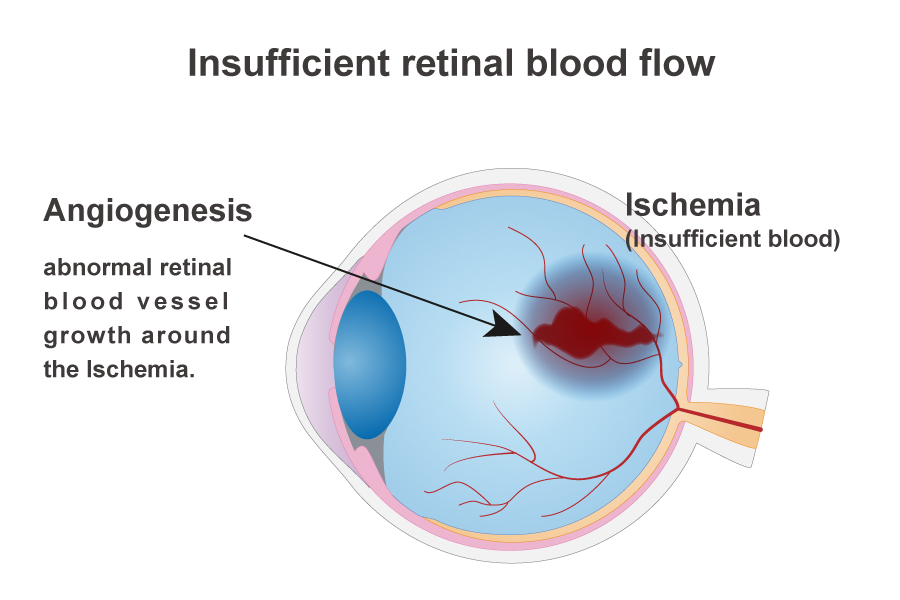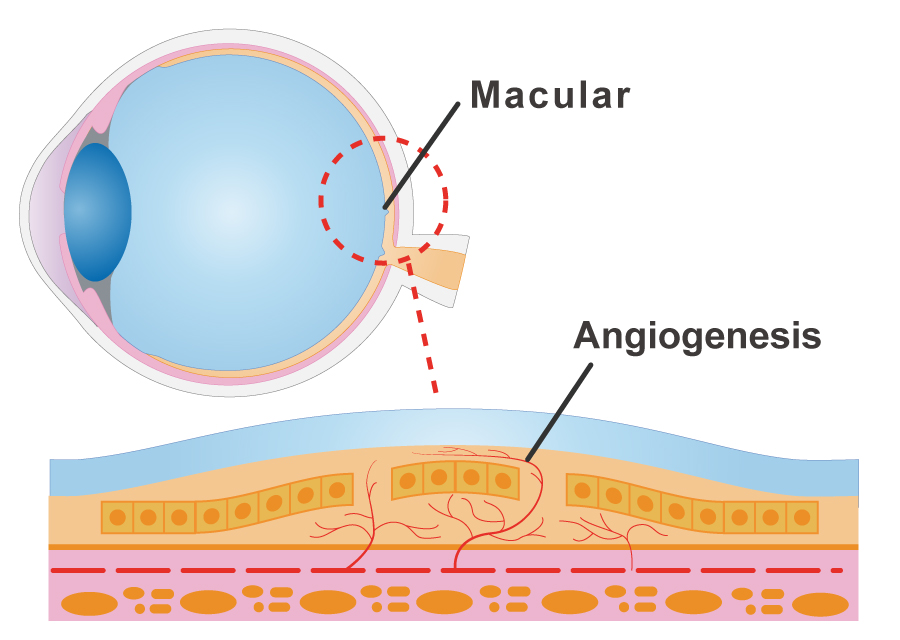
Angiogenesis is related to Diabetic retinopathy and Age-related acular degeneration.

Diabetic retinopathy is a secondary microvascular complication of diabetes mellitus. Two major retinal problems cause most of the diabetes-related vision loss: diabetic macular edema and complications from abnormal retinal blood vessel growth, angiogenesis.
Secondary to angiogenesis, increased retinal blood flow is of pathogenic importance in the progression of diabetic retinopathy. Understanding the role of hyperglycemia seems to be the most critical factor in regulating retinal blood flow, as increased levels of blood glucose are thought to have a structural and physiological effect on retinal capillaries causing them to be both functionally and anatomically incompetent.
High blood glucose induces hypoxia in retinal tissues, thus leading to the production of VEGF-A (vascular endothelial growth factor protein). Hypoxia is a key regulator of VEGF-induced ocular neovascularization. Secondary to the induction of VEGF by hypoxia, angiogenesis can be controlled by angiogenic inducers and inhibitors.
The balance between VEGF and angiogenic inhibitors may determine the proliferation of angiogenesis in diabetic retinopathy. Since VEGF-A is a powerful angiogenic inducer, utilizing anti-VEGF treatments has proved to be a successful protocol in the treatment of proliferative diabetic retinopathy.

Age-related macular degeneration (AMD) is a disease in which angiogenetic vessels, which don’t exist in healthy condition, occur from macular choroid.
This is located outside the retina as a blood vessel rich membrane where the vessels extend towards the retina. Because the vessel wall of angiogenetic vessels is very brittle particularly in diabetic retinopathy, it allows blood to leak in the macula tissue and clouds vision.
Macular function is most sensitive in the retina. The progression can be comparatively fast causing decreased visual acuity and distorted sight. So angiogenesis can be the cause for destruction of the retinal macula with blurred vision as a result. There is also a risk of blindness in the most severe cases.